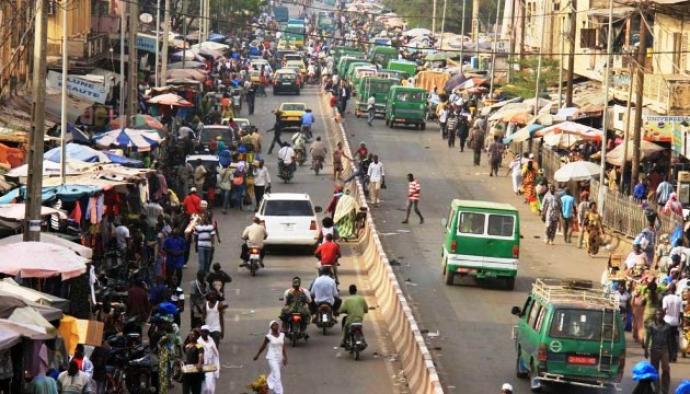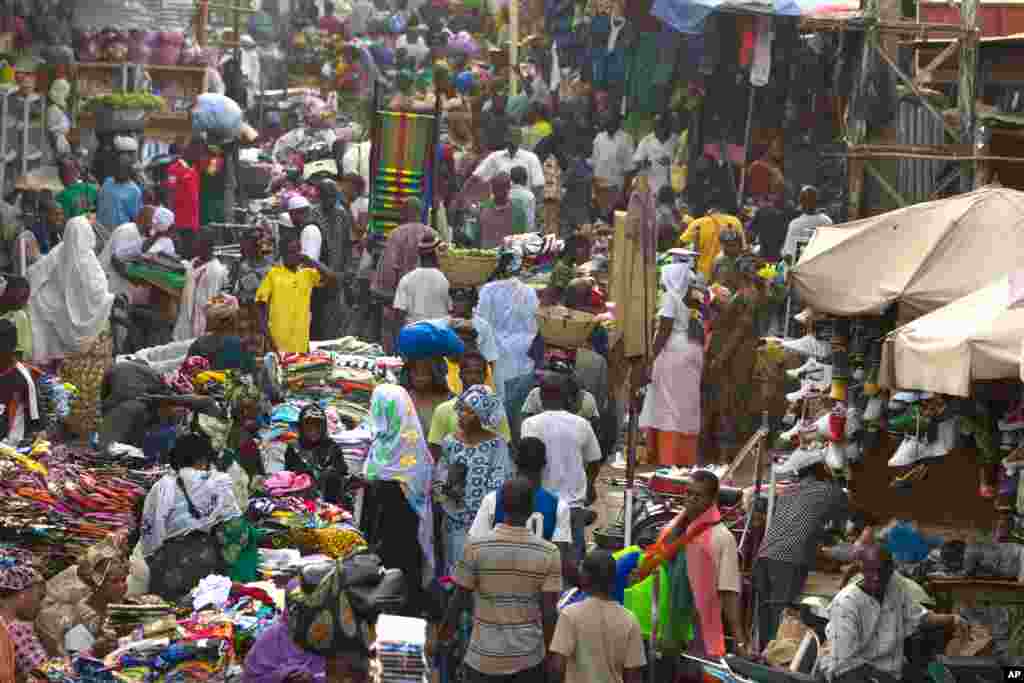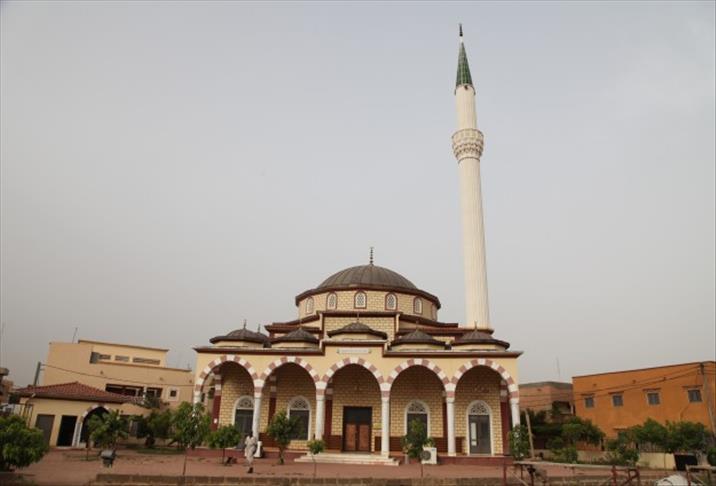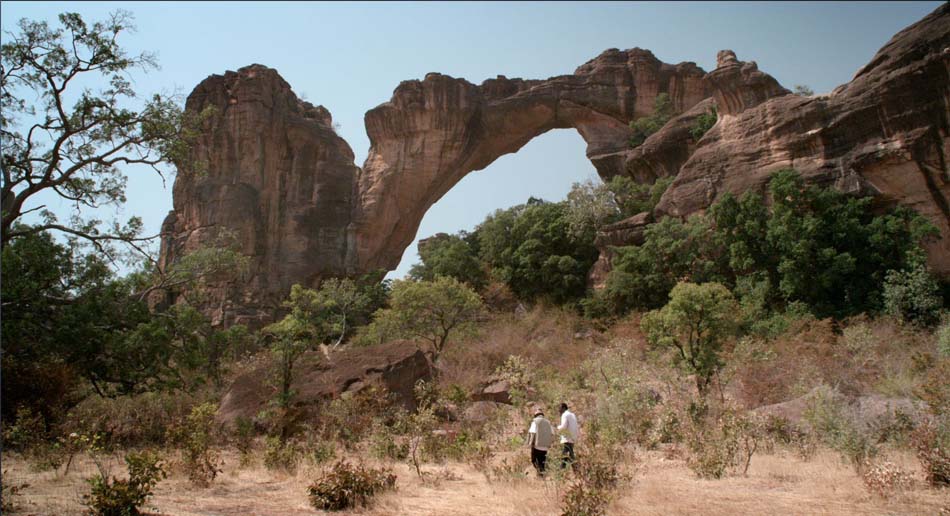MALI Dec 16-22, 2016
WHY GO?
Mali is a landlocked country in West Africa. Mali is the eighth-largest country in Africa, with an area of just over 1,240,000 square kilometres. The population of Mali is 14.5 million. Its capital is Bamako. Mali consists of eight regions and its borders on the north reach deep into the middle of the Sahara Desert, while the country’s southern part, where the majority of inhabitants live, features the Niger and Senegal rivers. The country’s economy centers on agriculture and fishing. Some of Mali’s prominent natural resources include gold, being the third largest producer of gold in the African continent, and salt. About half the population lives below the international poverty line of $1.25 (U.S.) a day. A majority of the population (55%) are non-denominational Muslims.
This is a rugged land of Sahelian sands & lush forests – Like an exquisite sandcastle formed in a harsh desert landscape, Mali is blessed by an extraordinary amount of beauty, wonders, talents and knowledge. Yet for now, it’s landscapes, monuments, mosques and music bars are off-limits, sealed from tourists by a conflict that is threatening the culture of this remarkable country.
The beating heart of Mali is Bamako, where Ngoni and Kora musicians play to crowds of dancing Malians from all ethnicities, while in the Dogon country, villages still cling to the cliffs as they did in ancient times. Further west, Fula women strap silver jewellery to their ears and their belongings to donkeys, forming caravans worthy of beauty pageants as they make their way across the hamada (dry, dusty scrubland). And in the northeast, the writings of ancient African civilizations remain locked in the beautiful libraries of Timbuktu.
Official name. Republic of Mali
Capital and largest city. Bamako 12°39′N 8°0′W
Languages. Official French. National languages: Bambara, Bomu, Tieyaxo, Bozo, Toro, So, Dogon, Maasina, Fulfulde, Hassaniya, Arabic, Mamara, Senoufo, Kita, Maninkakan, Soninke, Koyraboro, Senni, Syenara, Senoufo, Tamasheq, Xaasongaxango
Ethnic groups. 50% Mande, 17% Fula, 12% Voltaic (Senufo / Bwa), 10% Tuareg / Moor, 6% Songhai, 4% other
Independence from France. 20 June 1960
Area. Total 1,240,192 km2 (24th). Water (%) 1.6
Population. April 2009 census 14,517,176 (67th). Density 11.7/km2 (215th)
GDP (PPP). 2016 estimate Total $30.990 billion. Per capita $1,843
GDP (nominal). 2016 estimate Total $11.880 billion. Per capita $707
Tourist Information. www.le-mali.com/omatho/index.htm. As there are few travellers, Lonely Planet provides historical and cultural information rather than reviews and listings in their guide books. LP suggests other sources of information: information for on-the-ground travel in Mali is Lonely Planet’s Thorn Tree online travel forum www.lonelyplanet.com/thorntree. Other sources of good internet-based information are www.maliactu.net (local news in French) and blogs like Bridges from Bamako (http://bridgesfrombamako.com)
MONEY. West African CFA franc (XOF). Exchange rate (Sept 2016 xe.com) 1US$ = 588 CFA.
ATMs are found at almost every bank in Bamako. BDM banks have ATMs for VISA cards. The only ATM for Maestro/MasterCard is Banque Atlantique, across the river on the eastern bridge.
VISAS. Visas are not required for citizens of Algeria, Andorra, Benin, Burkina Faso, Cape Verde, Chad, Côte d’Ivoire, the Gambia, Ghana, Guinea, Guinea-Bissau, Liberia, Mauritania, Monaco, Morocco, Niger, Nigeria, Senegal, Sierra Leone, Togo and Tunisia.
For all other countries, a visa must be obtained before arrival to enter Mali. An invitation is required (copy of hotel reservations or company letter explaining purpose of trip) to obtain the visa. Short-stay and transit visas may be issued at borders depending on security situation.
It is possible to get a one month visa from the Malian embassy of Conakry: 2 photoS, passport; Come in the morning to fill a form and you will get your visa in the afternoon. The embassy is located 200m away from the locally known Hotel Camayenne.
Visas for onward travel: Nigeria. We traveled to Mali and Bomako specifically for the Nigerian visa. Obtaining it in Ghana had been the traditional method but the staff had changed and it was exceedingly difficult 2 years ago. The price varies between 40,000CFA for New Zealanders and Australians to 70,000CFA for Brits. Canada was 65,000.
The border town was Diboli and the entrance stamp to Mali consumed another hour or so. After the border, the demeanor of the people changed to smiling and waving. We bush camped just across the border in a large stand of huge baobab trees for great sunrise silhouette photos. The road followed the Senegal River for two hours to Kayes, a town vibrating with people, scooters and big trucks. There was a great selection of vegetables and real oranges. Most women wore head scarves and carried all manner of stuff on their heads.
We crossed to the north side of the river, the banks of which were lined with small plots of vegetables. A railway follows the road but appears to be not used and everything is moved by large semi-trailers. Garbage is everywhere with plastic bottles 2-3 feet deep in the ditches. The only way to deal with it is burning. In third world countries, the cleanest places are always the service stations.
By early afternoon, large rounded mesas appeared to the south. Villages had compounds with mud walled buildings with corrugated roofs held down by stones. The attractive, large central mosques were painted in Victorian styles. Hay was being gathered in the dry fields and eventually stacked on the roofs of the homes. Small water holes were skirted by vegetable plots and one had piles of adobe bricks. Eventually we were passing through a wide flat-floored valley surrounded by low rocky hills. A sense of industriousness pervaded the scene unlike in Senegal.
The road climbed up through rocky hills. Long-horned Brahma cattle were herded by young men.
The Italian couple is certainly the most colourful of the group. Emanual doesn’t speak a word of English (and makes no attempt to learn) and Paulo has neglected to read most of the pre-trip instructions. As a result she has a massive blue suitcase (specifically instructions were to avoid any suitcases and bring only backpacks) that is always in the way. A hilarious video shows them trying to extricate it from one of the under-the-seat storage area for 15 minutes. Eventually they used the spade to wedge it out. It pissed everyone off but she wouldn’t hear of leaving it in some square for one of the locals to use. She never reads, but Paolo is buried in a pasta cook book most of the time. He has taught me a Sardinian variety of rummy called Pinella that we play frequently. He also doesn’t listen to instructions well and they frequently wander off when told to not leave the truck. At the Senegal/Mali border, they were almost abandoned and were found actually having crossed into Mali without passports or Senegal exit stamps. Italian is a very emotional language and you never know if they are fighting or not. We endured 2 heated days of arguing when I thought they were going to abandon the trip. Paulo got drunk one night and the 3am argument woke up the entire crew.
It is impossible to help them when it is their turn to cook – things must be done in some rigid way specific to Italian cooking. He often makes fun of pizza made elsewhere – he thinks they are the only ones in the world with thin crust.
Paulo is a very experienced traveller. His income is from his house he rents in the summer and then he travels the rest of the year, so has now been to possibly 120 countries.
Houses are concrete or adobe with corrugated roofs strewn with rocks and garbage. Sticks fences contain the livestock. Thatched roof huts are common. Everyone waves and smiles, especially the kids. The girls giggle endlessly.
On the 18th, we were driving by 6:30 through the savannah. The road was better than in Senegal, but occasional potholes still made it slow. The earth was red and dust covers all the trees.
The women’s hairstyles had elaborate braiding and the most common business are Salons de coiffure – hair salons. Public transport are small boxy vans lined with wood benches. Packed by people, they are mobbed by local vendors selling snacks. Motorcycles and scooters are much more common than in Senegal. Stacks of old tires surround the tire stores. Electronic stores have stacks of old TVs outside. Many women carry large buckets and plates on their heads.
So much of the trip thus far has involved long hours driving and then parts of most days spent getting visas. The main tourist spots are not available as they are off the trip’s route, for example in Mauritania, and now in Mali.
In Mali, Timbuctou is a no-go zone and only accessible by UN flights. The UN has a massive presence here, but are as useless here as elsewhere. Ordinary tourists simple can’t go there. Today I read the book “Bad-Ass Librarians”, the amazing story of Timbuctoo and one of the greatest repositories of Islamic literature in the world. A man with a great deal of foreign money (donated mainly by Saudi Arabia, Dubai, Germany and the Netherlands) was able to purchase books from all over Mali and Burkina Faso and create 5 libraries to store 377,000 manuscripts. When they were threatened by Islamic terrorists in 2012, all but 5,000 were carefully transported to safe houses in Bamako. Unfortunately the much more humid climate of Bamako is causing problems and 10 special places with dehumidifying methods have been found to store all the manuscripts.
The other main destinations are Dogon country with its mud-walled towns and Djenne with the largest mud-walled mosque in the world. But both are an 8-hour bus ride away north and east of Bomako. One of the passengers (who is not going to Nigeria and thus has his passport) paid 120€ for an overnight trip to Djenne. Instead of the anticipated 8 hours on a bus, it turned into a 19 hour nightmare, he spent about 2 hours in Djenne and then a similar bus trip back. We investigated leaving the trip and going to Dogon. Not including the flight, the cost would be 300€ for a 3-day tour.
The main reason for coming to Bomako and Mali is it’s apparently the best place Steve has found to obtain a Nigerian visa, as he could no longer count on obtaining one in Ghana, the traditional place. He was intent on arriving at the embassy on the 19th, as later, the staff disappears for Christmas. We were at the embassy at 9am but Mali unexpectantly had declared the day a public holiday commemorating Mohammed’s Chrisianing (last week was his birthday). I think it takes no excuse to miss work. So the embassy was closed and we had a day with little to do. Our passports are not available so travel elsewhere was not possible. The Italians are getting more pissed off by the day because of the nature of the trip. Also leaving the truck could invalidate travel insurance.
The Niger River arises in the highlands of Sierra Leone and Guinea and flows NE to Timbuktu, then SE around Burkino Fasso through Western Niger where it forms the border between Benin and Niger. It then enters northwest Nigeria and forms its delta in the central coast of Nigeria.
BAMAKO
Motorcycles are the major form of transport. None has license plates and helmets are virtually never won. But you almost never see 3-4 people on a motorbike and few children.
An open sewer lines both sides of the roads. Sometimes there is a foul black liquid in the bottom, but more often garbage and silt takes up most of the sewer. I can’t imagine what happens in the rainy season (July and August) when full of water.

In Bamako, we are staying at the Sleeping Camel Hotel, definitely the hot spot in Bamako for tourists. This and the adjacent German Embassy are enveloped in the most amazing amount of razor wire. The front entrance of the hotel has a double locked door with 2 guards. The truck takes up most of the tiny front area and our tents most of the remaining available space. But the restaurant has good food and the foreign manager is incredibly accommodating. Three of us were keen to golf (do you know anyone who has ever golfed in Mali?), and Google said the only golf course in the country was at the Sleeping Camel! This turned out to be a hoax and we had a laugh with the manager. The prices in the hotel are expensive by Mali standards, but cheap compared to Western prices.
Four of us took one of the little box-shaped vans to the centre of town (the van’s walls are lined with wooden bench seats, the door is usually a chain strung across the opening, the windows are blown out and the other doors closed with a mixture of electrical and metal wire. They are the main method of public transportation here, cheaper and much more fun than a taxi. Many women have babies and casually breast feed in public.
The Grand Mosque was Saudi built and is not so grand. Non-Muslims can’t enter.
We walked through the market and quickly became overwhelmed by touts trying to get you in their stores. They are relentless, especially if you show the slightest interest in anything. I liked these small bronze statues – my favourite had a woman with a baby and a water bottle balanced on her head – it listed at 25,000 CFA and the lowest price he would go was 15,000, or about 22€, so I left, but the guy followed me for a block until I finally bought it.
The fetish market in this area was quite repugnant – full of the dried heads of bush animals and various dry skins, all very smelly. Who buys this stuff?

A 15-year-old tried to sell me a wallet. I made it clear that I did not need a wallet and wouldn’t take it even if he gave it to me for free, but that he was welcome to walk with us and practice his English. He proved to be a good tour guide and showed us all over. We bought street food and went to some obscure markets where we all bought something.
The main market is of Bamako is easily the most chaotic place I have ever experienced (the Indian man concurred that it was much worse than India, which really says something). The traffic moves at a snail pace and the number of people on foot massive. Merchandise covers most of the sidewalk and spills out onto the street.
The kid was so pleasant we all chipped in and gave him 2000 CFA at the end of the day. He was very happy and arranged to take us out to hear some Mali music in the evening (Mali is world-famous for its music). I ended up not going but regretted it.

Eyoub Mosque
When we returned to the Sleeping Camel, all available space was taken up by 6 Dutch motorcyclists also going to South Africa. Their route has been the same as us this far but they are going through Burkino Faso around Guinea, Liberia and Sierra Leone. I couldn’t imagine dealing with their risk of an accident and how difficult it would be to sit on a motorcycle for 8+ hours per day. Their challenge is also obtaining visas and they believe a Ghana visa can be obtained in Burkino Fasso.
On our third day here, we attended the Nigerian Embassy again and they were able to process our visas in about 54 hours. So we had almost 3 days off and several of us went to he National Museum and the National Park. It is basically a botanical garden in the city, but with quite a good zoo with only African animals – elephants, chimpanzees, baboons, birds, snakes, fish (in an aquarium), lions and everything in between. The enclosures are quite large and I thought the zoo was well done, especially by African standards.
Phil, one of the owners of the Sleeping Camel, is originally from Ohio and is married to a native Malian woman. He is a very nice guy, full of information and a pleasure to deal with. He treated the entire crew to a boat trip on the Niger River and supplied for free as much beer as we could drink. We traveled between the two big bridges and allowed lots of time for sunset photos. We then came back to the hotel for dinner prepared by Steve and then went out to a show of Mali music. Normally the music starts at 11pm but we had arranged it for 9. The bands changed frequently and we heard a great variety of Mali music, a mixture of blues, rock and reggae.
As I have already said, the Sleeping Camel is virtually the only place travellers stay in Bamako. The place is crowded in the evenings with expats coming for dinner, UN workers (I chatted with three Brits, one a bomb disposal expert flying in the morning to Kidal to work for several months), UN soldiers (many Irish), UN police and virtually all travellers coming through Bamako.
SIBY and KAMARJAN ARCH
On Dec 21, one of the fellows in the group arranged to rock climb near Siby, about 45kms south of Bamako towards Guinea. We were off before 8 to the southern bus station, and after over an hours wait to fill the bus, everyone was squished into the narrow seats. I luckily had 3 people in my row with skinny asses. I even got to hold a baby for a while. I have now seen more women breastfeeding in public now than in the last 2 decades.
In Siby, the climbing guide wasn’t available, so the seven of us hired someone from the hotel to take us up to Kamarjan Arch, a few kms out-of-town. The huge arch sits on top of the ridge south of town and is backed by nice rock columns.

Siby is surrounded by hills with great sandstone walls. We walked through a typical African village where all the little kids were yelling “baboa” or white men. Seven little boys joined us for the hike. They were so sweet, quiet, not begging and a pleasure to have along. Through the heat, we climbed on a dusty road where we passed three women with enormous bundles of wood on their heads coming from the ridge above (the men just seem to sit around town and do nothing) and then took off on a trail that climbed onto the ridge. After a few scrambles, we ended on top of the arch for great views and then climbed down into the massive arch.

There were some neat caves with multiple passages near the arch.
When we returned to the road, we met a herd of maybe a thousand long-horn cattle coming down the road. It was interesting to see all the varied methods of branding the cows. We also met three of our group ascending the road on the back of scooters. In the town, there was no public transport so a van was arranged for the hot drive back to Bamako.
We all had to have 165,000 + spending money CFA when we left Mali for the other CFA country visas when we left Mali. Someone came to the hotel to do the changes.
The Nigerian visa took over 48 hours to process. Once obtained, we left the next morning to go to Guinea. The bridge across the Niger and surrounding streets were lined with army in SWAT dress, as it they were expecting some terrorist action.
We drove through Siby again. The entire school of kids were in the yard doing push ups. Even though we had just had breakfast, the street food was exceptional and most indulged. They had very light deep-fried dumplings served with a tomato sauce that were delicious. Then I had the greasiest fried egg (tomato + salt) sandwich that was equally scrumptious. Siby is surrounded on the west by hills topped with high sandstone cliffs similar to the Colorado plateau. Just past Siby was a tall column several hundred feet rising from the ridgeline. Most climbed up to the top of the ridge. We had a large crowd of locals watching who seemed surprised that anybody would bother.

Anvil of Niekema
Foosball is popular in every town and tables are crowded with kids playing a vigorous game.
Mali/Guinea border. To exit Mali, a long form with unusual information about the truck had to filled out. They would not accept the truck’s insurance and Steve took a taxi 100kms to buy specific vehicle insurance for Guinea. It took over 4 hours while we waited in no-mans land between the two borders. But we were able to cross to either side and had an adventure in eating street food. Everyone changed money (5000 CFA = 75,000 Guinea francs).